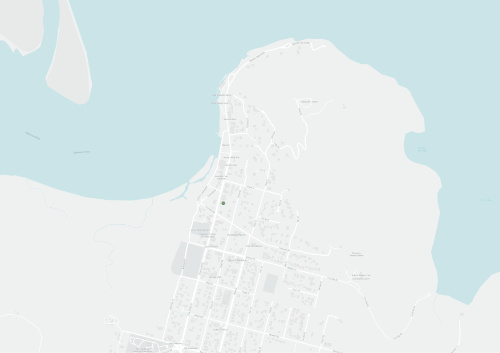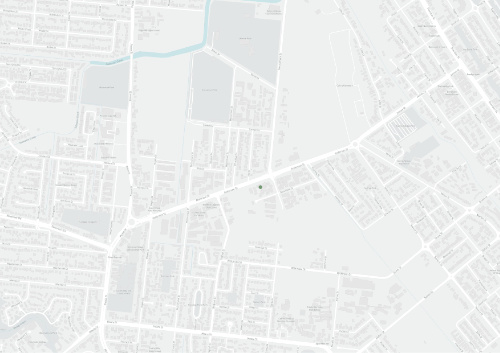Plan Explorer
Filter by:
Region
Topic
Sector
Other
Results
Western Cape Chamber of Commerce strategic plan 2010-2012
Obsolete CommunityThis strategic plan was developed following a review of the 2007 Western Chamber of Commerce Strategic Plan during a workshop in Weipa on the 20th of November 2009.
Western Cape Communities Trust & Western Cape Communities Coordinating Committee strategic plan 2009-2012
Obsolete StrategicThis document was released by the Western Cape Communities Trust (WCCT) and Western Cape Communities Coordinating Committee (WCCCC) as a plan to deliver on 4 key objectives within the mining lease area surrounding Weipa.
South of the Embley communities, heritage and environment management plan
Current OperationalThis community, heritage, and environment management plan was developed by the South of Embley working project group for the area of Rio Tinto Alcan's mining lease between Aurukun and Weipa in mid 2011.
Great Barrier Reef report card 2012 and 2013
Current InformationalThe Great Barrier Reef report card is part of the Reef Quality Water Protection Plan and measures the progress from 2009 to 2013 regarding the Reef Water Quality Protection plan 2009 targets.
Port of Weipa environmental management plan
Current StrategicThis environmental management plan was released by the North Queensland Bulk Ports Corporation as part of their environmental program with the objective of acting as a reference document for all then-current and potential users of the Weipa port.
Pormpuraaw Aboriginal Lands and Waters fire management plan
Current StrategicThe Pormpuraaw fire management plan was created by the Pormpuraaw Land and Sea Management group on behalf of the Thaayorre and Mungkan Traditional Owners and the Pormpuraaw Aboriginal Shire Council in conjunction with Cape York Sustainable Futures and Firescape Science, to provide various strateg
Mungumby Community Plan
Current CommunityThis document was released in March of 2012 following a 2007 Federal Court ruling which recognised the Eastern Kuku Yalanji people's of 129,600ha of country between the South Mossman River and just North of Black Mountain near Cooktown.
Wujal Wujal Aboriginal Shire Council planning scheme
Current CommunityThe Wujal Wujal planning scheme was released in 2013 by the Wujal Wujal Aboriginal Shire Council and set out the council's intention for the future of Wujal Wujal over the next 20 years from 2013.
Northern Peninsula Area Council 2010-2020 Land and Environment Management Plan introduction
Current StrategicThis document is the introductory pages for the Northern Peninsula Area Council's 2010-2020 Land and Environment Management Plan released in December 2010.
Draft Cape York Peninsula Natural Resource Management Plan (2005)
Obsolete Government PolicyThe aim of the Plan is to ensure that natural resources are well managed, and protected where required, for the benefit of us all and future generations. The Plan aims as far as possible to be consistent with other regional strategies.
Annan and Endeavour Strategic Plan
Current StrategicThe Annan-Endeavour Catchment Management Group has developed this Strategy in close association with all interested community, government and industry groups.
Cape York Peninsula Heritage Act 2007
Current Statutory (law)An Act to provide for the identification of the significant natural and cultural values of Cape York Peninsula, and cooperative and ecologically sustainable management of Cape York Peninsula.
Coastal Management Plan
Current Government PolicyThe Coastal Management Plan is prepared under the Coastal Protection and Management Act 1995 (Coastal Act) to describe how the coastal zone of Queensland is to be managed.
Cape York Regional Plan
Current Government PolicyPublished by the Department of State Development, Infrastructure and Planning. The plan identifies and interprets the state’s interests in land use planning and development, as described in the State Planning Policy, for the Cape York region.
Kaanju Homelands Wenlock & Pascoe Rivers Cape York Peninsula Indigenous Protected Area Management Plan
Obsolete OperationalPrimarily, this Plan is for Kaanju people living on homelands, but it also serves as a guide for external land and resource management, conservation, service delivery, economic development and community development organisations and agencies, both government and non-government, engaged with Chuul
Laura Ranger Country Plan and Poster
Current OperationalPoster outlining a set of guiding priniciples on which Laura Rangers will operate on their country.
Laura-Normanby Catchment Management Strategy
Current StrategicThe Laura-Normanby Catchment Area covers a vast and relatively undeveloped area with extensive riverine and wetland systems, one of Queensland's largest conservation areas (Lakefield National Park), numerous sacred aboriginal sites, good cattle country and rich agricultural lands.
Mitchell River Watershed Strategic Plan
Current StrategicThe Mitchell River Watershed Strategic Plan 2013-2016 is an update of the Mitchell River Watershed Management Plan created in 2000.
Reef Water Quality Protection Plan 2013
Current Government PolicyReef Plan is a joint commitment of the Australian and Queensland governments. The plan is a collaborative program of coordinated projects and partnerships designed to improve the quality of water in the Great Barrier Reef.
Upper Mitchell Catchment Rehabilitation Plan
Current StrategicTechnical Report on Rehabilitation Needs
Vegetation Management Act 1999
Current Statutory (law)The purpose of this Act is to regulate the clearing of vegetation in a way that:
Eastern Kuku Yalanji Indigenous Protected Area Management Plan Stage 1
Current OperationalCaring for Kuku Nyungkal Country
Our vision for our bubu (land)1 is to
-
Maintain our Nyungkal culture, belief, customs and law/lore;
Recently added
Western Cape York Water Quality Improvement Plan
StrategicOne of the major impediments facing Cape York is the myth that it is a vast undisturbed wilderness sitting in a time-warp that has by-passed the rest of Australia.
Cape York Peninsula Regional Biosecurity Strategy
Current StrategicCape York Natural Resource Management (Cape York NRM), Cook Shire Council (CSC), Weipa Town Authority, Wujal Wujal, Hopevale, Lockhart, Mapoon, Napranum, Aurukun, Pormpuraaw and Kowanyama Aboriginal Shire Councils and the Northern Peninsula Area Regional Council (NPARC) have collaboratively devel
Hopevale Aboriginal Shire council planning scheme
Current StrategicHope Vale is a community for families that celebrates Aboriginal culture, striving to be sustainable, viable, fair and equitable, accommodating change, fostering growth, promoting success in a friendly and culturally sensitive environment and is an enjoyable place to live.
Hopevale Economic Strategy 2014-2017
Current StrategicHope Vale Aboriginal Shire Council (HVASC) is focussing on a Community Economic Development (CED) model; where communities initiate their own solutions to local problems.
Hopevale community plan 2012
Current CommunityThe intent of the community plan is that it will represent the community’s views, visions and values for the future of the local government area, and set a strategic vision for what the community wants the area to be like in 10, 20 or more years.
Eastern Kuku Yalanji Indigenous Protected Area Management Plan Stage 1
Current OperationalCaring for Kuku Nyungkal Country
Our vision for our bubu (land)1 is to
Maintain our Nyungkal culture, belief, customs and law/lore;
Eastern Kuku Yalanji Indigenous Protected Area Management Plan Stage 2
Current CommunityJalunji-Warra Land and Sea Country
(excerpt)
Wunta Draft Strategic Plan
Current StrategicWe are proud and culturally strong community organisation.
Wunta Traditional Fire Management Plan Stage 1
Current OperationalThis document is to support the re-introduction of an indigenous practical fire management action plan to the Nesbit river area in Cape York Peninsula. The project is a stage one plan that will develop over time with further stages and to encompass more fire managed land in the area.
Vegetation Management Act 1999
Current Statutory (law)The purpose of this Act is to regulate the clearing of vegetation in a way that:

